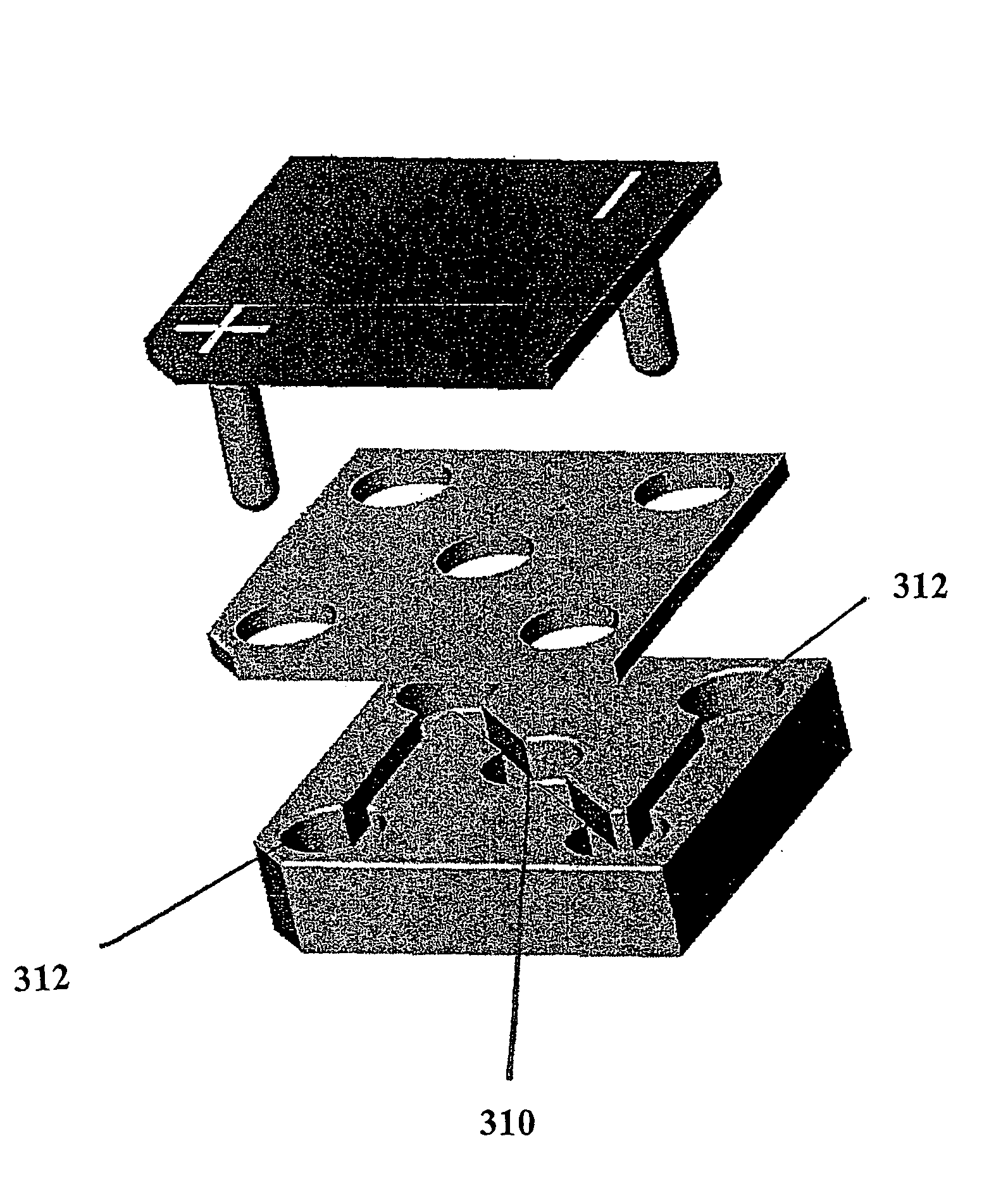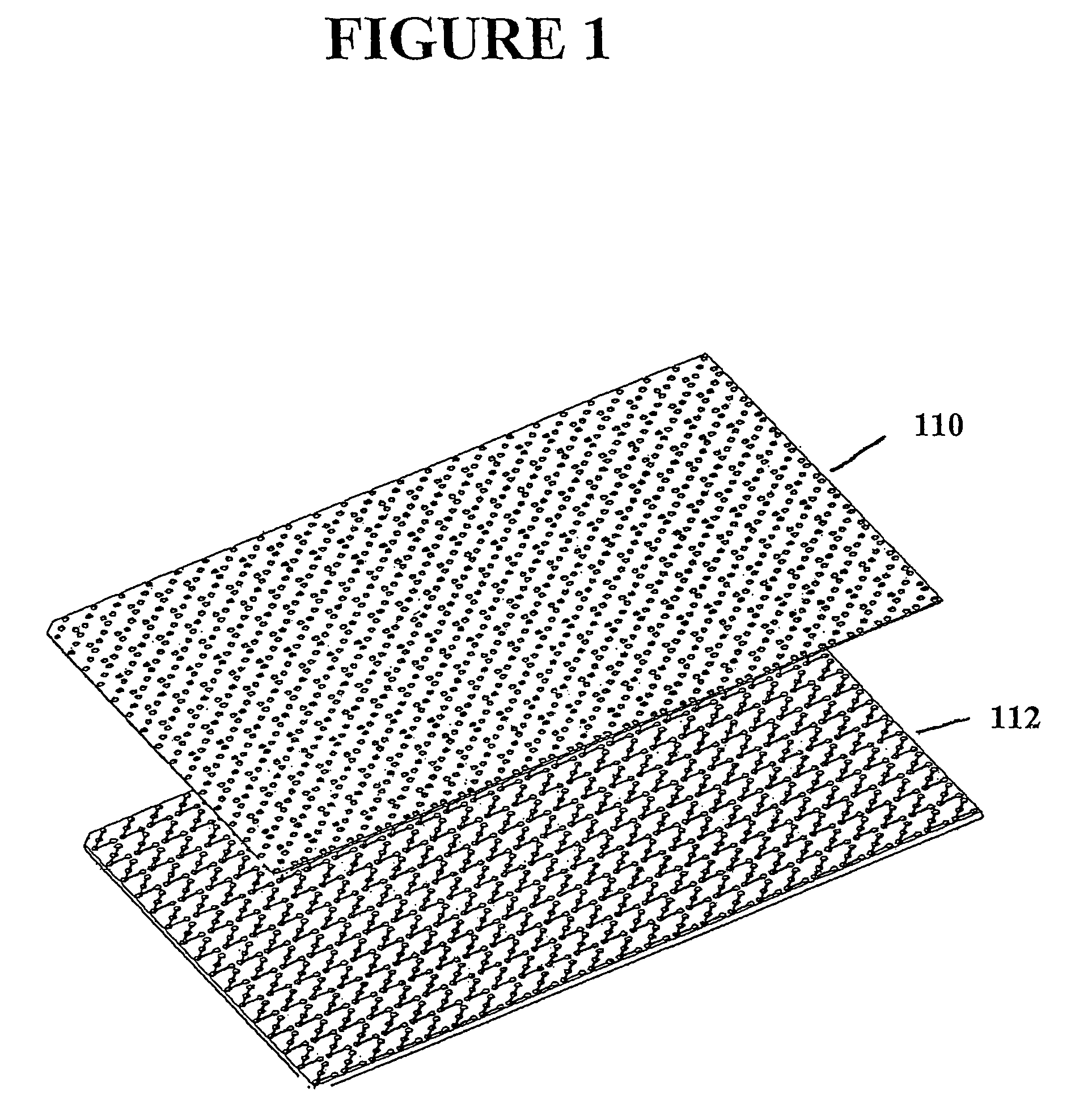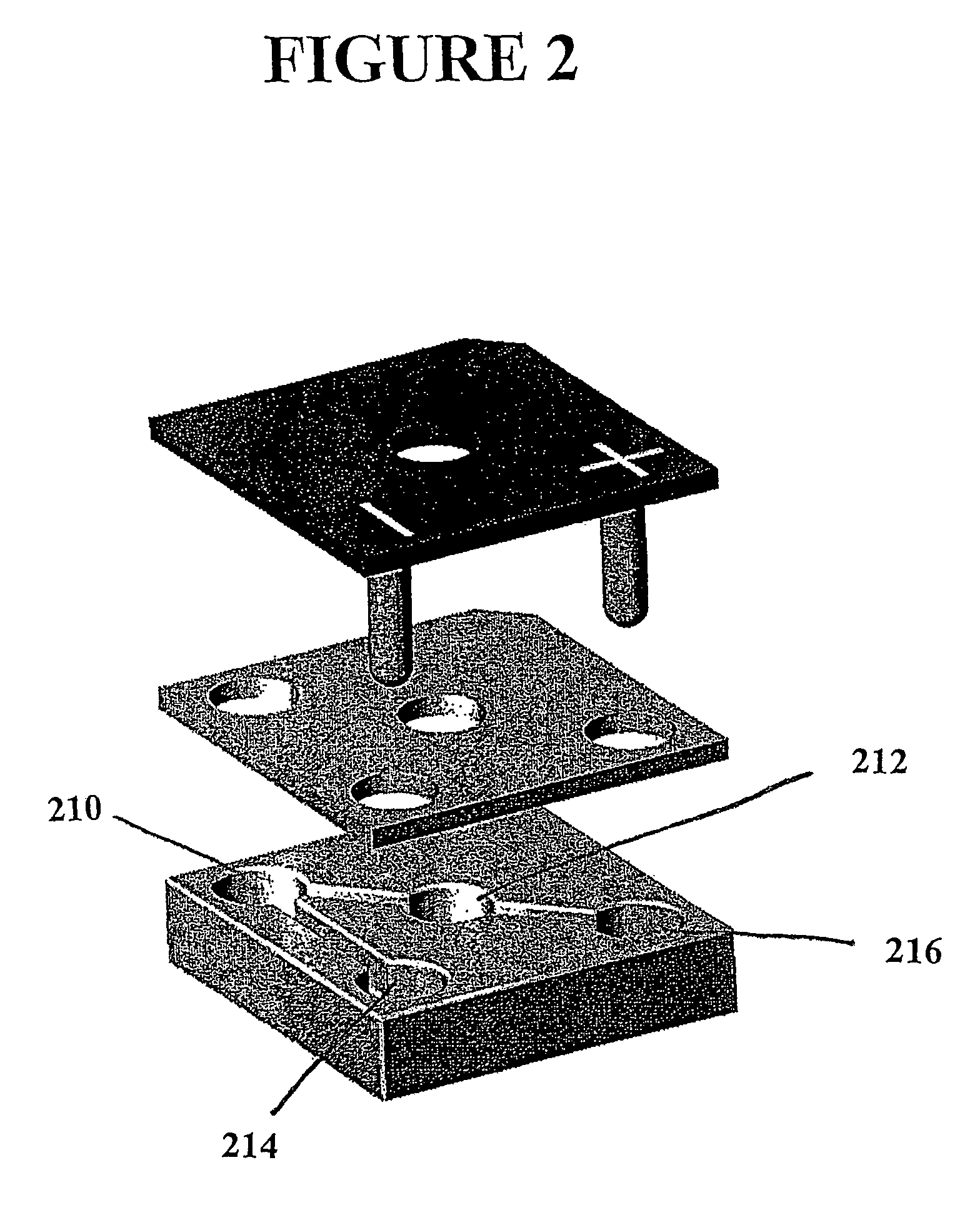Microstructure apparatus and method for separating differently charged molecules using an applied electric field
a microstructure apparatus and electric field technology, applied in the field of microstructure apparatus, can solve the problems of high quantity of sup>32/sup>p to be used in assays, difficult to eliminate waste, and difficult to use, etc., to achieve the effect of simplifying device design and construction
- Summary
- Abstract
- Description
- Claims
- Application Information
AI Technical Summary
Benefits of technology
Problems solved by technology
Method used
Image
Examples
example 1
Electrophoretic Planar Microstructures Formed in PDMS
[0069]Microfluidic structures were fabricated using SU-8 photoresist and poly(dimethylsiloxane) (PDMS). 384 single capture format microstructures with port size of 1 mm and channel size of 250 μm were designed in an 8.5X11 cm footprint similar to microtiter plates, as shown in FIG. 1. This design was converted into a transparency by a high-resolution printer. The transparency was used as a mask in photolithography to create a master in SU-8 photoresist. PDMS cast against the master yielded a polymeric replica containing 384 of the desired microstructures. The surface of this replica was then oxidized in oxygen plasma. Oxidation of the PDMS yields channels whose walls are negatively charged when in contact with neutral and basic aqueous solutions. These channels have the advantage of being filled easily, even with liquids with high surface energies (especially water). As shown in FIG. 4b, fairly clean channels and microstructure se...
example 2
Use of the PDMS Planar Structures to Separate Kinase Products from Substrates
[0070]Each microstructure used in these experiments was composed of 4 ports and three channels, as depicted in FIG. 4b. In general, the sample (a peptide substrate mixture which has been reacted with a kinase enzyme) is introduced through an opening in the sealing plate into the sample chamber (S). The electrode assembly is then energized, biasing the (+) and (−) chambers positive and negative, respectively. Negatively charged components of the sample migrate toward the positive electrode and into the capture port (C). This port contains a matrix (Biodyne B, Pall Inc.) that irreversibly binds peptide and is located in the center of the structure to allow fluorescence detection with a standard plate reader.
[0071]Kemptide discrimination assays were performed in PDMS structures fabricated as described in Example 1. A 0.9 mm diameter Biodyne B membrane disc was inserted into the capture port. The structure was ...
example 3
3D Electrophoretic Microstructures
[0072]The microstructures described in example 1 could be modified to have several more layers, creating a three dimensional channel microstructure. When an electric field is applied across these structures, the molecules of interest may travel orthogonally through the capture matrix to bind, rather than travelling tangentially across the capture matrix. Tangential-flow arrangements generally produce moon-shaped deposits on the capture matrix, as shown in FIG. 5c. Using and orthogonal flow approach may increase the uniformity and reproducibility of the signal on the capture matrix. A depiction of a three-dimensional channel and chamber microstructure is shown in FIG. 9.
[0073]One approach to making three-dimensional layered structures is to use several layers of perforated and formed polymer material. As illustrated in FIG. 10, a bottom polymer layer may be used which has molded channels and microstructure sections forming a portion of the microstruc...
PUM
 Login to View More
Login to View More Abstract
Description
Claims
Application Information
 Login to View More
Login to View More - R&D
- Intellectual Property
- Life Sciences
- Materials
- Tech Scout
- Unparalleled Data Quality
- Higher Quality Content
- 60% Fewer Hallucinations
Browse by: Latest US Patents, China's latest patents, Technical Efficacy Thesaurus, Application Domain, Technology Topic, Popular Technical Reports.
© 2025 PatSnap. All rights reserved.Legal|Privacy policy|Modern Slavery Act Transparency Statement|Sitemap|About US| Contact US: help@patsnap.com



